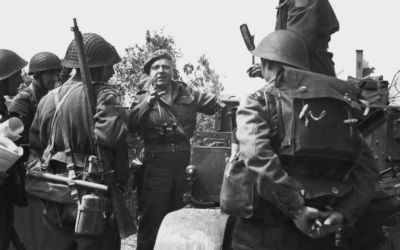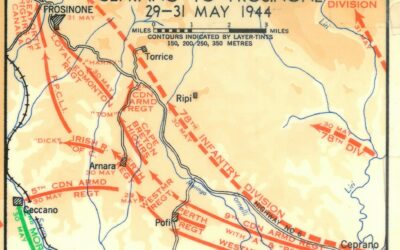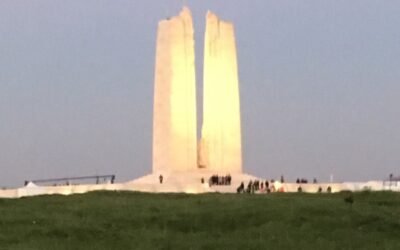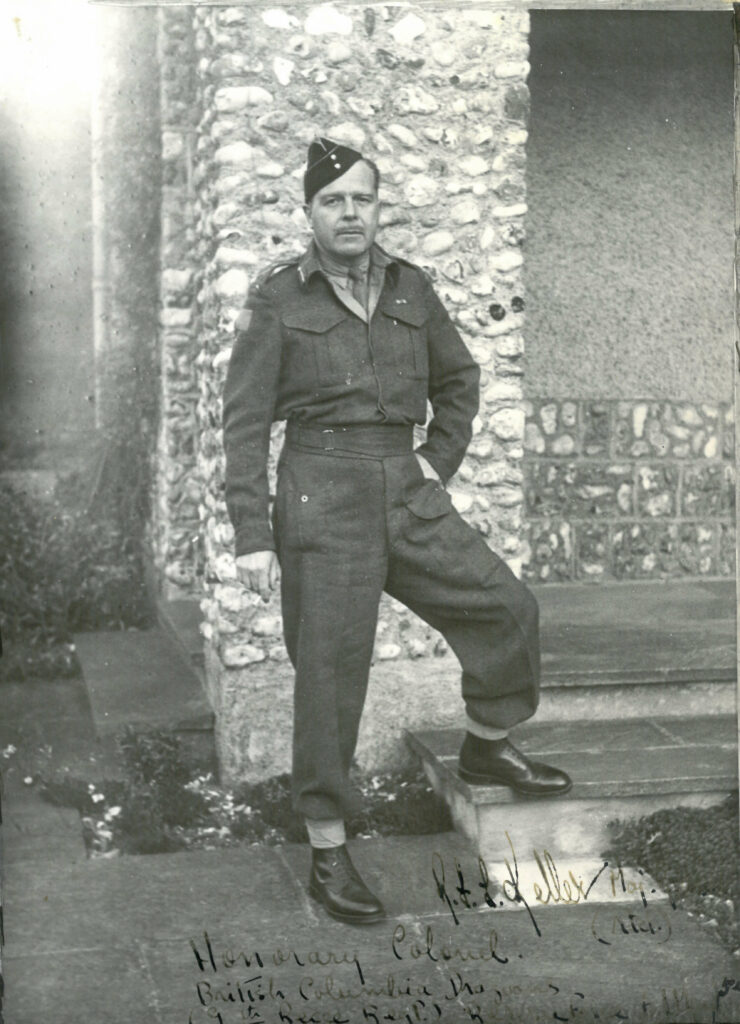
BCD-P-1123.21
Canadians, British and Americans landed in Normandy on D-Day, June 6, 1944. Canada’s 3rd Infantry Division carried the flag for Canada inland towards Caen, France. Two months later, British and Canadian forces were to push southeast of Caen to meet the Americans enveloping the German forces from the southwest and close the Falaise Gap to prevent their escape east to fight another day.
Air support of ground operations was rudimentary due to inadequate communications between aircraft and ground units, among other factors. Lines on maps were hard to discern on the ground. Allied units were in the open or on the move. The Germans were hidden in their defensive positions. Allied ground forces were responsible for marking their boundaries and positions with lights and coloured smoke, which were quickly obscured by dust and smoking fires in daylight, to guide the bombers to their targets.
The U.S. 8th Army Air Force’s heavy bombers had a dubious record of successful daytime tactical bombing, having hit American units on July 24 and again on July 25, killing over 130 and wounding over 500 soldiers. However, on August 8, it was the Canadians, British, and Poles’ turn to be bombed short of the bomb line by Liberator and sleek shiny Flying Fortress aircraft in daylight. The R.A.F. did the same on August 14 by confusing yellow smoke plumes for targets instead of friendly Canadian units.
A German joke, inspired by these events, goes, “When the Luftwaffe comes over, the Allies duck; when the R.A.F. comes over, the Germans duck; but when the Americans come over – everyone ducks!” [Caen pg. 333]
Apart from seventeen fatalities of Okanagan men serving in the Canadian infantry, armoured, and paratroop units between June 6 and August 10, 1944, only one may be attributed to the accidental ‘short’ bombing by aircraft of the 8th U.S. Army Air Force on the heads of Canadian troops on August 8, 1944. Lieutenant James Esmond CLARK of Penticton in the Royal Canadian Artillery died. Major-General Rodney Frederick Leopold KELLER of Kelowna, General Officer Commanding the 3rd Canadian Infantry Division, was also injured that day. A successful night bombing run by the Royal Air Force dropped more explosives from more aircraft without any ‘friendly fire’ accidents. The clear sky mid-day American bomb run of 492 aircraft hit three of four targets but dropped bombs 10 miles short of the bomb line, hitting many Polish and Canadian units such as Lt. Clark’s troop of medium guns and Maj-Gen Keller’s tactical headquarters, among others. An estimate of 65 killed and 250 wounded, included 25 killed and 131 wounded Canadians.
For Maj-Gen. Keller, the injuries he sustained may have spared him dismissal from command for performance issues. He had been invested as Commander of the Order of the British Empire [C.B.E.] by King George IV in late July. He admitted to suffering from physical and mental strains of command since D-Day in a memo to his superiors early in August. His shell fragment injury resulted in recuperation in Vancouver, his retirement from the Canadian Army, and his return to Kelowna with his family in 1945. Keller served on Kelowna City Council and was the Honorary Colonel of the British Columbia Dragoons after the war. He died of a heart attack while attending 10th anniversary D-Day events in France in June 1954 and is buried in Kelowna with full military honours.
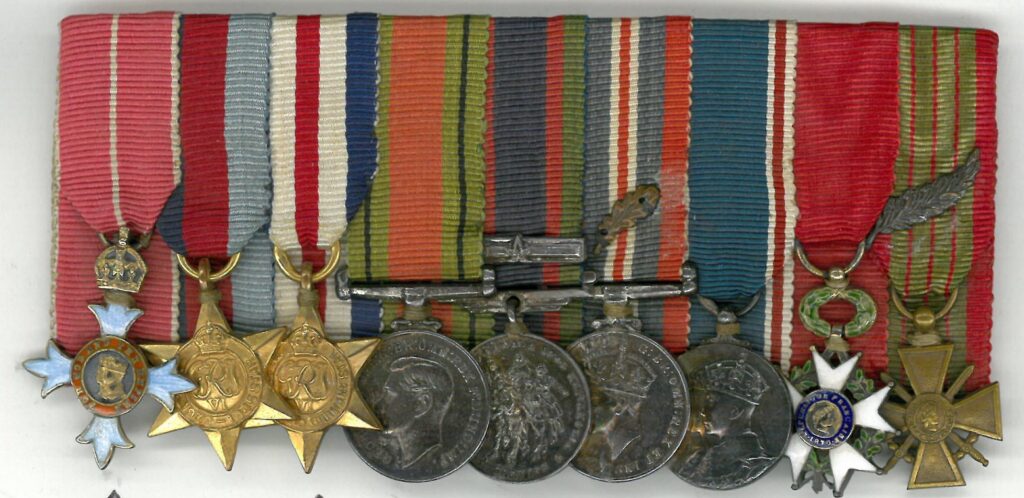
With the C.B.E., French Legion of Honour
And Croix de Guerre with Palm.
BCD-M-500
Lieutenant James E. Clark is remembered on the Penticton Cenotaph.
Sources:
CAEN, Anvil of Victory, Alex McKee, Souvenir Press, London, 1964; pg. 333
Guns of Normandy, A Soldier’s Eye View France 1944, Geo. C. Blackburn, McClelland and Stewart Inc. Toronto, 1995
The Gunners of Canada, History of the Royal Regiment of Canadian Artillery, 1919-1967, Col. G.W. L. Nicholson CD, McClelland and Stewart Ltd, Toronto, 1972
British Columbia Regional Digitized History, Kelowna Courier newspapers; //bcrdh.ca

